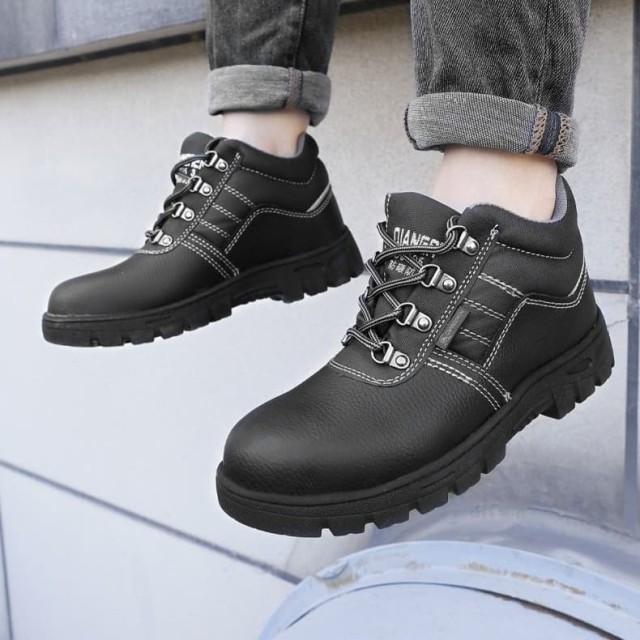Foot injuries in physically demanding jobs aren’t just painful—they can derail careers and productivity. Research shows that inadequate footwear contributes to chronic conditions like plantar fasciitis and bunions, costing employers thousands in lost workdays. This guide breaks down the science of protective boot design and actionable strategies for workers and employers.
Foot Health Risks in Physically Demanding Jobs
How Poor Boot Design Triggers Plantar Fasciitis and Bunions
Ill-fitting or unsupportive boots force the feet into unnatural positions. Over time, this strains the plantar fascia (the ligament supporting the arch), leading to inflammation and heel pain. Similarly, narrow toe boxes squeeze the forefoot, causing bunions—a deformity that often requires surgical correction.
Key warning signs:
- Morning heel stiffness
- Swelling around the big toe joint
- Numbness from compressed nerves
Long-Term Consequences of Ignoring Foot Support
Chronic foot pain reduces mobility, forcing workers to modify movements in ways that strain knees, hips, and backs. Studies link untreated foot injuries to:
- Reduced productivity: Workers with pain move slower and take more breaks.
- Higher absenteeism: Severe cases lead to extended medical leave.
- Permanent disability: Advanced arthritis or nerve damage may end careers.
"Foot injuries can lead to permanent disability, increased costs for employers, and lost efficiency," according to workplace safety research. Proper boots aren’t just PPE—they’re productivity tools.
Ergonomic Features Your Work Boots Must Have
Arch Support Technologies for Heavy-Duty Environments
Look for boots with:
- Contoured footbeds: Mimic the foot’s natural arch to distribute weight evenly.
- Shock-absorbing midsoles: Reduce impact during walking or jumping (critical for warehouse or construction workers).
- Adjustable support: Some brands offer interchangeable insoles for personalized comfort.
Materials That Reduce Friction and Improve Circulation
- Moisture-wicking linings: Prevent blisters by keeping feet dry.
- Flexible yet supportive uppers: Materials like full-grain leather adapt to foot movement without collapsing.
- Wide toe boxes: Allow toes to splay naturally, reducing bunion risk.
Pro tip: Break in new boots gradually—wear them 1–2 hours daily for the first week to identify pressure points.
Proactive Strategies for Employers and Workers
Workplace Assessments to Match Boots to Job Demands
Employers should:
- Analyze tasks: Do workers stand for hours? Handle heavy loads? Slip-resistant soles or metatarsal guards may be needed.
- Consult specialists: Podiatrists or ergonomic experts can recommend features based on job hazards.
- Offer subsidies: Encourage compliance by covering part of boot costs.
Maintenance Practices to Extend Boot Functionality
- Clean regularly: Dirt degrades materials; use conditioners for leather boots.
- Rotate pairs: Alternating boots lets materials rebound between wears.
- Replace insoles every 6 months: Cushioning loses effectiveness over time.
Ready to Invest in Safer Feet?
3515 partners with distributors and employers to deliver scientifically designed work boots that protect workers and cut long-term injury costs. [Contact us] to explore bulk solutions tailored to your industry’s needs.
Because healthy feet are the foundation of a thriving workforce.
Products You Might Be Looking For:
View steel-toe safety boots for heavy-duty jobs
Explore customizable protective footwear solutions
Related Products
- Wholesale Customizable Suede Safety Boots - Puncture-Proof with Velcro Closure
- Safety Footwear Wholesale Manufacturer for Custom OEM/ODM Production
- Wholesale Anti-Smash & Puncture-Proof Safety Shoes Custom Manufacturing for Brands
- Athletic Safety Shoes with Dial Closure & Steel Toe for Wholesale & Custom Manufacturing
- Durable Leather Work Boots Wholesale Manufacturer & Custom Factory
Related Articles
- How to Choose Work Boots That Match Your Industry's Safety Needs
- Steel Toe Work Boots: Balancing Safety and Comfort for Demanding Jobs
- How to Choose Work Boots That Match Your Job Demands and Safety Needs
- How to Choose Work Boots That Balance Safety, Comfort, and Durability for Your Job
- Matching Men’s Work Shoe Safety Technologies to Workplace Hazards



















